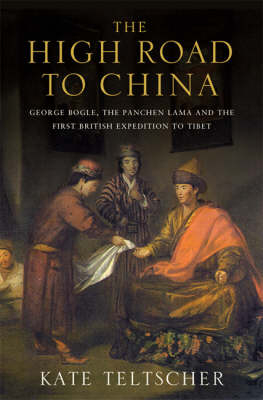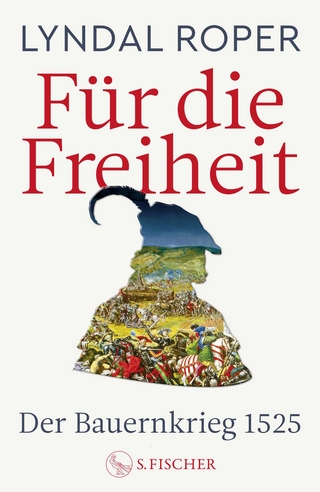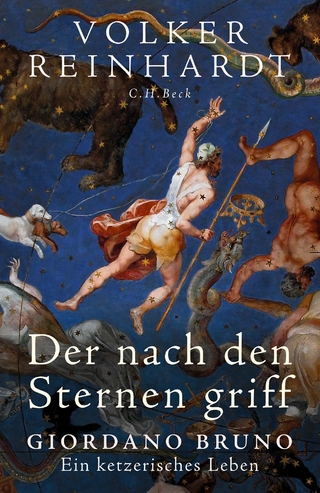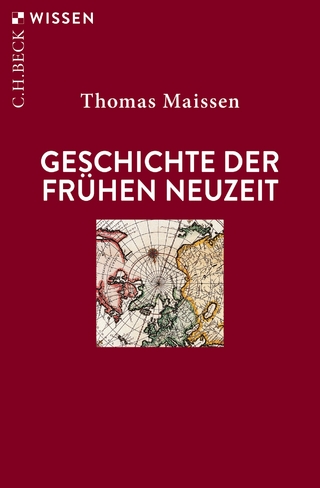
The High Road to China
George Bogle, the Panchen Lama and the First British Expedition to Tibet
Seiten
2006
|
Export ed
Bloomsbury Publishing PLC (Verlag)
978-0-7475-8621-0 (ISBN)
Bloomsbury Publishing PLC (Verlag)
978-0-7475-8621-0 (ISBN)
- Titel ist leider vergriffen;
keine Neuauflage - Artikel merken
Tells the story of the British attempt to reach the Qianlong Emperor's ear, a narrative of two extraordinary journeys across some of the harshest and highest terrain in the world: Bogle's mission, and the Panchen Lama's state visit to China, on which British hopes were hung.
In 1774 the head of the East India Company in Bengal, Warren Hastings, determined to open trade relations with the hitherto impenetrable court of imperial China. To this end he entrusted the young Scotsman George Bogle to be the first British envoy to Tibet. Once there, Bogle attempted to enlist the influence of the Panchen Lama in a bid to attract the sympathy of the Qianlong Emperor; a hard task, for the imperial court generally viewed trade with disdain, and took an altogether dim view of the British Empire. But what began as an unprecedented diplomatic mission soon acquired a different character. Bogle became smitten by what he saw, and in particular by the person of the Panchen Lama himself, with whom he struck up a remarkable friendship, fuelled by a reciprocal desire for understanding. And as for Tibet: 'When I look upon the time I have spent among the Hills it appears like a fairy dream.' Bogle's letters and journals, by turns playful, penetrating, self-deprecating and packed with engaging detail, were to help create the myth of Tibet in the West, the Shangri-La so familiar to us today.
This book tells the story of the British attempt to reach the Qianlong Emperor's ear, a narrative of two extraordinary journeys across some of the harshest and highest terrain in the world: Bogle's mission, and the Panchen Lama's state visit to China, on which British hopes were hung. Piecing together the narrative from Bogle's private papers, Tibetan biographies of the Panchen Lama, the account of a wandering Hindu monk, and the writings of the Qianlong Emperor himself, Kate Teltscher deftly reconstructs the momentous meeting of four very different worlds.
In 1774 the head of the East India Company in Bengal, Warren Hastings, determined to open trade relations with the hitherto impenetrable court of imperial China. To this end he entrusted the young Scotsman George Bogle to be the first British envoy to Tibet. Once there, Bogle attempted to enlist the influence of the Panchen Lama in a bid to attract the sympathy of the Qianlong Emperor; a hard task, for the imperial court generally viewed trade with disdain, and took an altogether dim view of the British Empire. But what began as an unprecedented diplomatic mission soon acquired a different character. Bogle became smitten by what he saw, and in particular by the person of the Panchen Lama himself, with whom he struck up a remarkable friendship, fuelled by a reciprocal desire for understanding. And as for Tibet: 'When I look upon the time I have spent among the Hills it appears like a fairy dream.' Bogle's letters and journals, by turns playful, penetrating, self-deprecating and packed with engaging detail, were to help create the myth of Tibet in the West, the Shangri-La so familiar to us today.
This book tells the story of the British attempt to reach the Qianlong Emperor's ear, a narrative of two extraordinary journeys across some of the harshest and highest terrain in the world: Bogle's mission, and the Panchen Lama's state visit to China, on which British hopes were hung. Piecing together the narrative from Bogle's private papers, Tibetan biographies of the Panchen Lama, the account of a wandering Hindu monk, and the writings of the Qianlong Emperor himself, Kate Teltscher deftly reconstructs the momentous meeting of four very different worlds.
Kate Teltscher is a Senior Lecturer in English Literature at Roehampton University. She studied at the University of York and was a North Senior scholar at St John's College Oxford. She has published numerous essays in academic collections and journals, and reviewed for the Guardian and the TLS. Her doctoral research, a study of British and European writing on India in the seventeenth and eighteenth centuries, was published as India Inscribed (Oxford University Press, 1995). The High Road to China is her first book for a general readership.
| Erscheint lt. Verlag | 21.8.2006 |
|---|---|
| Zusatzinfo | Illustrations, (some col.), maps, ports., (col.) |
| Verlagsort | London |
| Sprache | englisch |
| Maße | 153 x 234 mm |
| Einbandart | Paperback |
| Themenwelt | Reisen ► Reiseberichte ► Asien |
| Geschichte ► Allgemeine Geschichte ► Neuzeit (bis 1918) | |
| Geisteswissenschaften ► Geschichte ► Regional- / Ländergeschichte | |
| ISBN-10 | 0-7475-8621-7 / 0747586217 |
| ISBN-13 | 978-0-7475-8621-0 / 9780747586210 |
| Zustand | Neuware |
| Informationen gemäß Produktsicherheitsverordnung (GPSR) | |
| Haben Sie eine Frage zum Produkt? |
Mehr entdecken
aus dem Bereich
aus dem Bereich
Giordano Bruno - ein ketzerisches Leben
Buch | Hardcover (2024)
C.H.Beck (Verlag)
29,90 €


